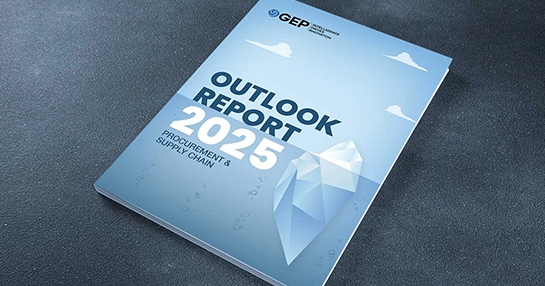
Purchasing Cards: A Smarter Way to Control Spend and Simplify Procurement
- Purchasing cards (P-Cards) streamline procurement by automating payments, reducing administrative overhead, and improving spend control.
- Integrating P-Cards into procurement platforms enhances efficiency, ensures compliance, and provides real-time visibility into transactions.
- Embedded payments and AI-driven analytics are shaping the future of spend management, helping businesses optimize cash flow and supplier relationships.
April 16, 2025 | Procurement Strategy
The Challenge: Manual Payments Are Holding Procurement Back
Manual payments are still holding procurement back, creating inefficiencies in payment processing for low-value, high-volume purchases. Using traditional purchase orders (POs) and invoices is time-consuming and costly. Moreover, accounts payable (AP) departments struggle with approval delays, compliance risks and lack of visibility into real-time spending.
What’s the solution? Start with purchasing cards (P-Cards) – an automated payment solution that speeds up transactions, enhances control and integrates seamlessly into modern procurement platforms.
What Are Purchasing Cards?
Purchasing cards function like corporate credit cards but are specifically designed for procurement transactions. Unlike traditional methods requiring POs and multi-step approvals, P-Cards allow employees to make pre-approved purchases instantly. Each transaction is recorded in real-time, reducing paperwork and improving financial oversight.
With built-in controls, organizations can set spending limits, restrict merchant categories and monitor usage to prevent unauthorized purchases and fraud. In addition, by eliminating manual invoice processing, P-Cards enable procurement teams to focus on strategic initiatives rather than administrative tasks.
Benefits of Implementing a P-Card Program
1. Increased Efficiency
By automating transactions, P-Cards eliminate the need for manual purchase orders and invoice approvals. This drastically reduces the workload for procurement and AP teams, enabling faster, more efficient purchasing.
2. Better Spend Control
P-Cards allow businesses to define spending limits, approve vendors, and track transactions in real time. This ensures compliance with internal procurement policies while providing enhanced transparency.
3. Cost Savings
Processing a single invoice can cost an organization anywhere from $10 to $20. P-Cards reduce these administrative costs by consolidating multiple purchases into one streamlined payment process.
4. Improved Compliance & Security
P-Card programs incorporate fraud prevention measures such as merchant category restrictions, transaction limits, and AI-powered anomaly detection. This reduces the risk of unauthorized transactions and improves auditability.
Why to Integrate P-Cards in Your Procurement Platforms
Integrating purchasing cards into AI-driven procurement platforms takes efficiency and compliance to the next level. Here's how:
1. Seamless Integration with Spend Management Software
Organizations using AI-powered procurement software can embed P-Cards into their workflows, automating approvals, payment processing, and reconciliation. This eliminates delays and provides real-time insights into transactions.
2. Real-Time Visibility
With embedded P-Cards, procurement leaders can set predefined spending limits, restrict certain purchase categories, and generate real-time reports on usage and compliance.
3. Faster Supplier Payments & Stronger Relationships
Embedded P-Cards reduce payment cycles, ensuring suppliers are paid promptly. This strengthens supplier relationships and optimizes cash flow management.
4. Reducing AP Workload
Fewer invoices mean fewer approvals, allowing AP teams to focus on strategic financial planning rather than manual reconciliation.
Best Practices for Deploying P-Cards
To maximize the benefits of purchasing cards, organizations should:
- Establish clear policies on spending limits, vendor approvals and allowable expenses.
- Ensure integration with procurement and expense management software to automate approvals and reconciliation.
- Train employees and procurement teams on best practices for compliance and fraud prevention.
- Regularly review and audit P-Card transactions to optimize efficiency and minimize risk.
Embedded Payments and AI-Driven Spend Management
As procurement technology evolves, embedded payment solutions are redefining how organizations handle purchasing and supplier payments. AI-powered platforms are making P-Card programs smarter, allowing businesses to analyze spending patterns, predict future expenses and enforce policy compliance more effectively.
By integrating P-Cards with spend management platforms, companies can future-proof procurement operations, ensuring greater financial control, reduced costs and improved efficiency.
Take the Next Step
• Learn More
Gain insights into the future of digital payments in procurement by watching our webcast 5 Ways to Leverage Virtual Cards for B2B Payments.
• Discover GEP SOFTWARE
Explore how GEP’s payment solutions can optimize procurement efficiency.
• Request a Demo
See how AI-powered procurement technology streamlines purchasing and payments.



